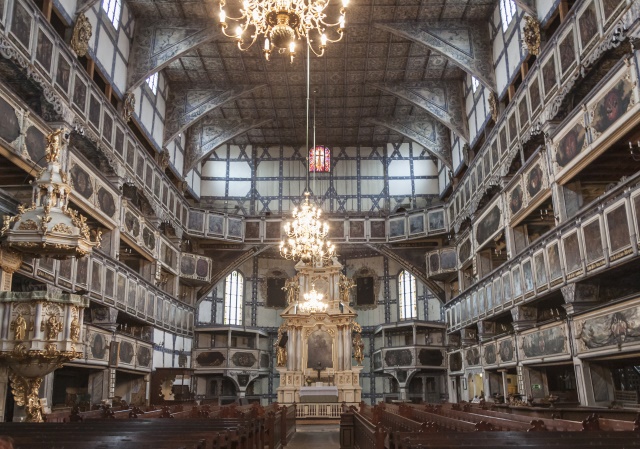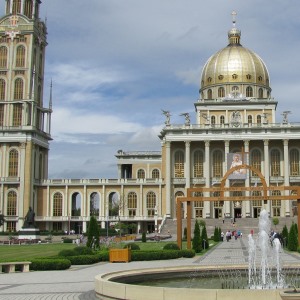Other Christian places of importance
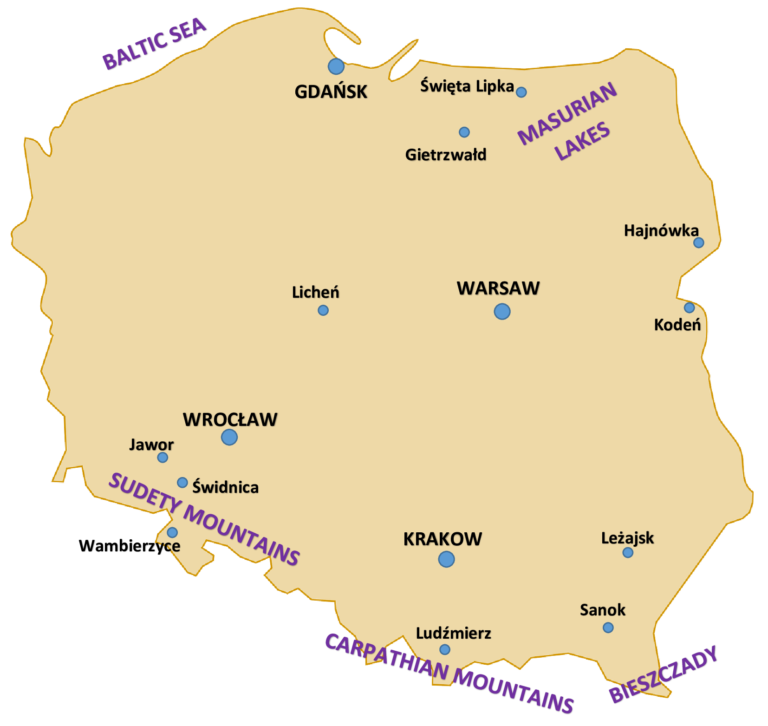
Contemporary Poland is 90% catholic and has one of the highest church attendance in Europe. In this section we show other Catholic places of interest and places of interest of many other faiths and denominations which are also part of the fabric of society in Poland: Protestant churches, Orthodox churches mainly in the East.
Gietrzwałd
The only place in Poland where Marian apparitions confirmed by the Catholic Church took place.
In the year 1877, according to the Catholics, the Virgin Mary was revealed to two people, little girls Stanisława Samulowska and Justyna Szafryńska. She appeared several times, speaking the Polish language (as opposed to German; Since in East Prussia German was the main language and there was Polish minority), and explained how important it is to pray and say the rosary. Since then, pilgrims from Poland and other countries, have been coming to Gietrzwałd to see the picture of the Virgin Mary and a spring with claimed miraculous powers.
The Catholic Church acknowledged the Vision of the Mother of Christ as real in 1977. The town is now an official pilgrim area.
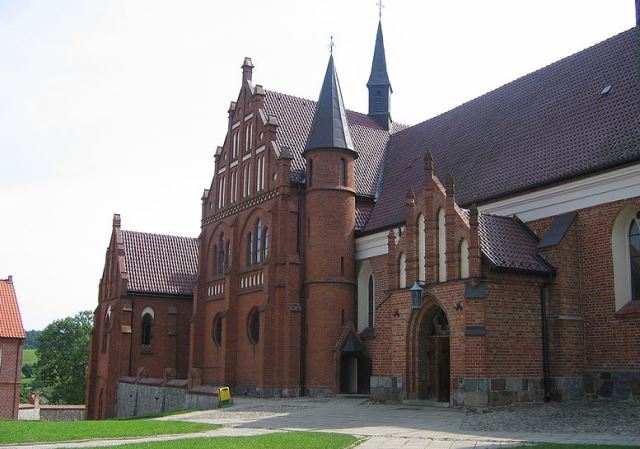
Source: Wikipedia
Licheń
Village situated 18 km north-east of Konin, the second most visited Poland’s religious sanctuary after that of Częstochowa. Licheń has two churches. One of them is the Sanctuary of Our Lady, Queen of Poland, the largest church in Poland, 7th largest in Europe and 11th largest in the world. Its five-nave interior is supposed to remind us of the early Christian basilicas. It can comfortably house 17,000 faithful and its tower is 128m high. The other one is St. Dorothy’s Church with a miraculous icon representing the Virgin Mary. In 1999 Pope John Paul II blessed the new shrine as a Sanctuary of Our Lady of Sorrow.
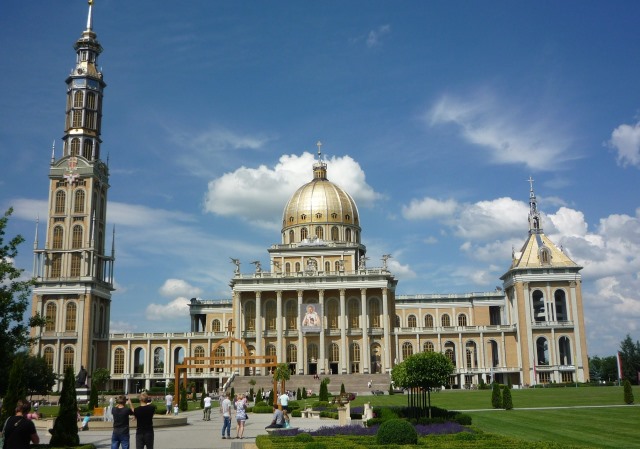
Sanctuary of Blessed Father Jerzy Popiełuszko (Warsaw)
Sanctuary situated in the district of Żoliborz in Warsaw. Site of pilgrimages to the graveside of Blessed Father Jerzy Popiełuszko, the spiritual leader of the Solidarity movement, murdered by agents of communist secret police in 1984. His “Masses for our Homeland” were attended by thousands of Poles at the church.
Next to the church there is a Museum of Father Popiełuszko. In 9 rooms there are personal items, photos, sound presentations related to his life and martyrdom.
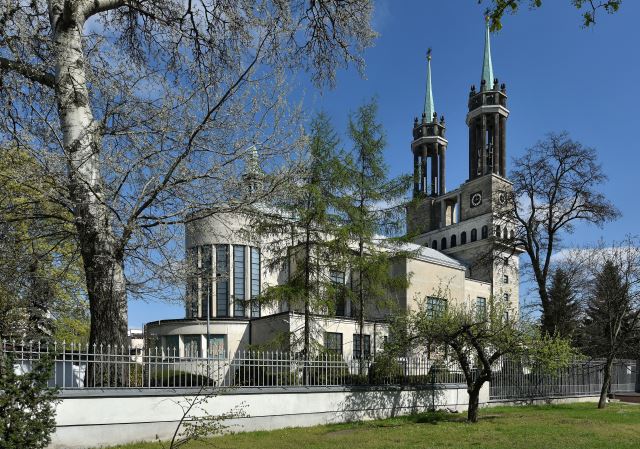
Source: Wikipedia
Sanctuary of Divine Providence (Warsaw)
In the same district of the city, possible visit at Wilanów Palace and Park.
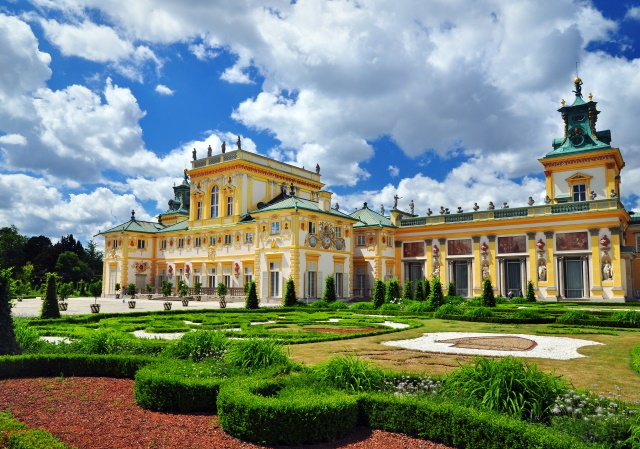
Kodeń
Baroque Basilica of St Anna with the marvellous picture of the Mother of God of Kodeń, called the Queen of Podlasie. Situated 20 km south of Terespol.
Ecumenical meetings of young people are held here. The Way of the Cross is represented by one hundred wooden figures.
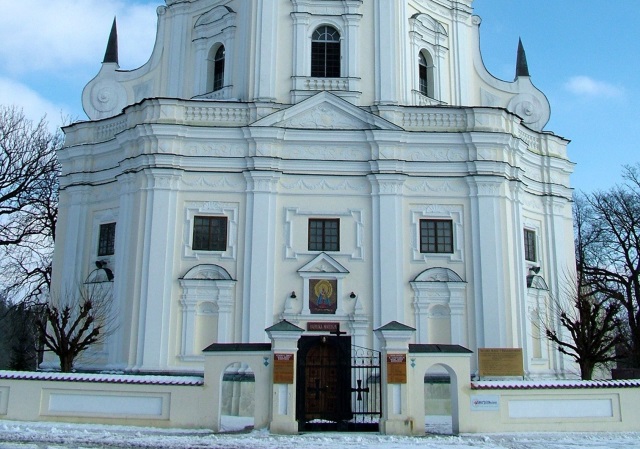
Leżajsk
Basilica and Monastery of Franciscan Friars with a miraculous picture of Our Lady of Consolation in Leżajsk (67 km north-west of Przemyśl)
The painting of the Madonna occupies a special position among other famous Polish images and is officially recognized as miraculous. The image of the Mother of God has the features of late Gothic painting from Lesser Poland. In a simplified way repeats the type of the painting of Salus Populi Romani from the Basilica of Santa Maria Maggiore in Rome. It comes from the end of the 16th century.
Over 250,000 tourists and pilgrims from Poland and abroad come here every year.
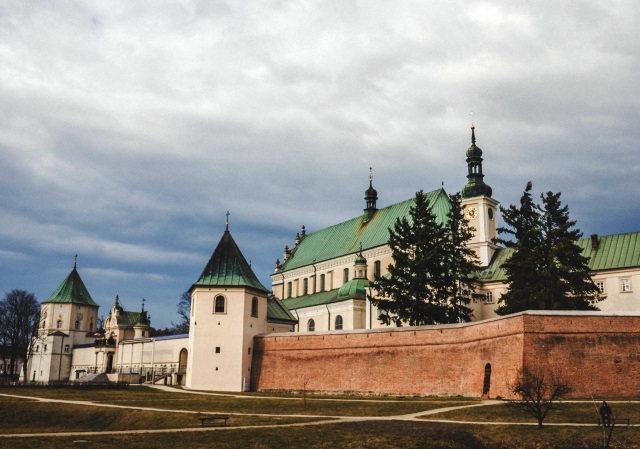
Ludźmierz
Village in Podhale region, 4 km south of Nowy Targ. In the local church there is a miraculous figure of the Virgin Mary, known as the Queen of Podhale.
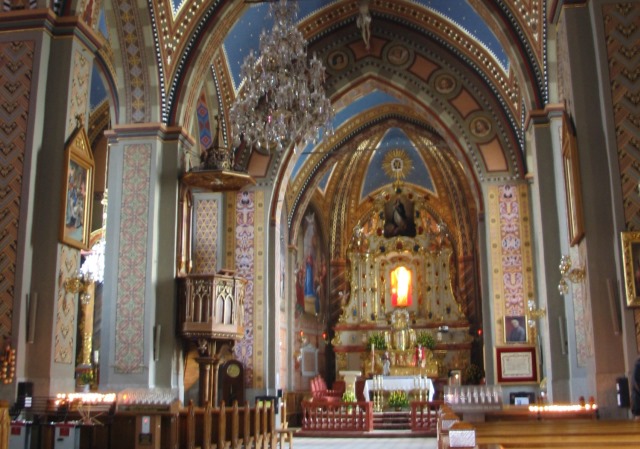
Source: Wikipedia
Święta Lipka
72 km north-east of Olsztyn, this Jesuit monastic complex is considered the most beautiful baroque construction in Poland. A baroque gateway (18th century) leads visitors and pilgrims into the Marian sanctuary. The three-nave basilica has a very impressive and richly adorned interior. The highlight of the spot is the baroque organ from 1721.
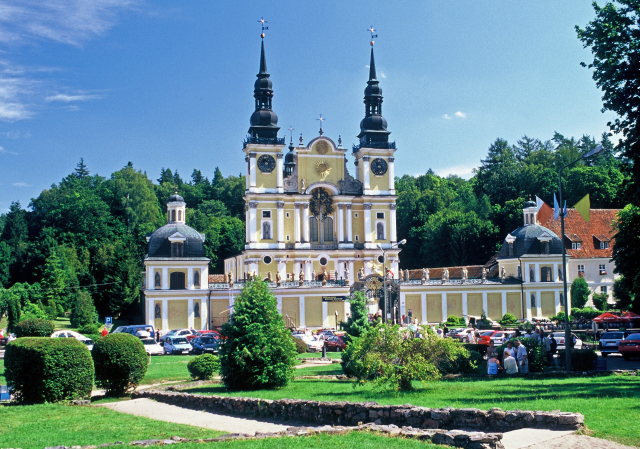
Wambierzyce
30 km northeast of Kudowa Zdrój, the 18th century Baroque basilica with miraculous 13th century figure of the Mother of God with Child. The Basilica called the “Jerusalem of Lower Silesia” is one of the best known “calvaries” with 74 chapels and a precious moving Christ child’s crib. In 1218 a blind person recovered their eyesight while praying in front of the figure of Mary with Child which was placed on a large lime tree. Since then the cult of the the image began to spread very quickly.

Hajnówka
Sanok
The town has a Gothic castle, rebuilt in the Renaissance style.
Visiting a huge collection of icons explaining the art of ‘writing’ an icon is a great experience. An exhibition of works by Zdzislaw Beksiński – born in Sanok painter, sculptor, photographer and graphic artist – is worth seeing modern arts amateurs.
The Sanok Ethnographic Park with precious objects of wooden architecture of the region shows the story of ethnic minorities which used to live here.

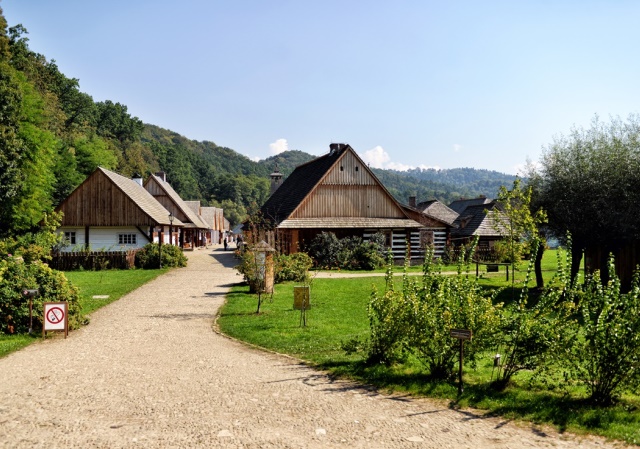

Churches of Peace – Świdnica and Jawor
Churches of Peace were built in the second half of the seventeenth century, following the Peace of Westphalia, ending the Thirty Years War (1618-1648), when pressed by the Protestant Sweden Catholic Emperor Ferdinand III granted the Silesian Lutherans right to build three temples in areas directly subordinate to his authority.
Imperial permission to build Churches of Peace was fortified with additional restrictions. The Protestants could only erect a temple outside the city walls, without towers and tower bells, only with perishable materials – wood, sand, straw and clay. They could not remind a church and its construction could not exceed one year. There were three such churches built: in Glogow, Jawor and Świdnica. To date, two survived, while the church in Glogow burned down in a fire caused by a lightning strike.

